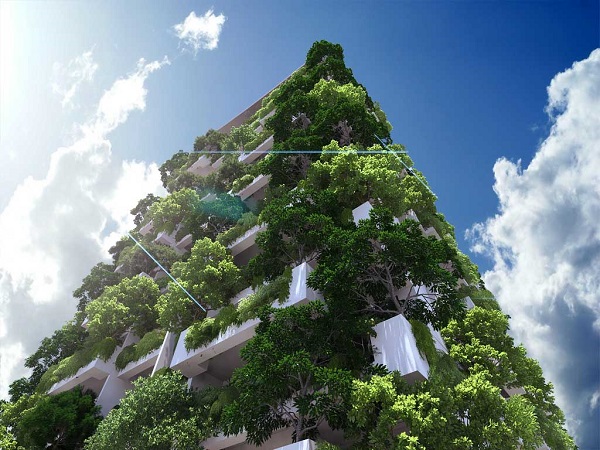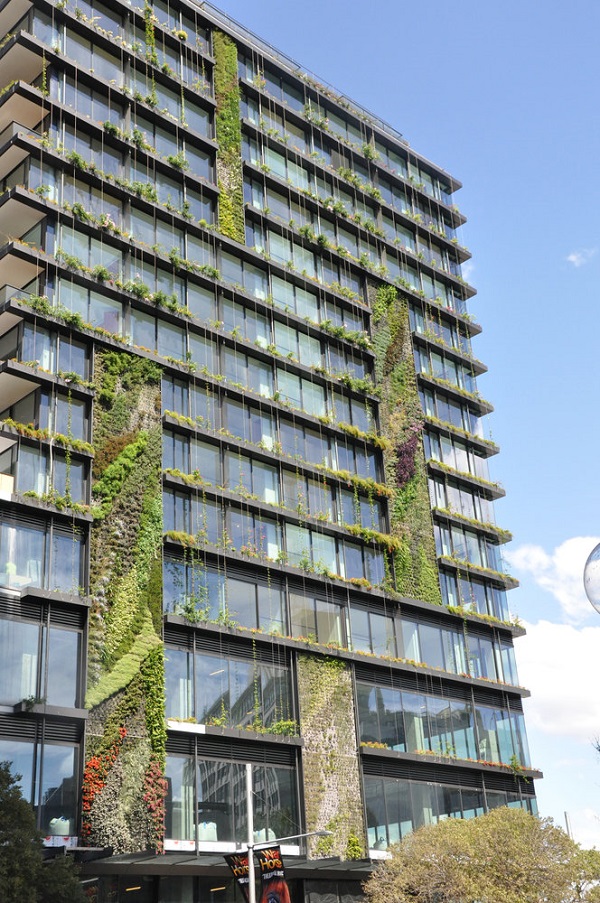Patrick Blanc might have invented vertical gardens, as he claims, or perhaps he simply popularized an earlier concept, as editors at Wikipedia confidently attest. In any case, Blanc is the reason these “green walls” are popping up with increasing frequency, so there’s nobody better to explain what it is they bring to the world.
“I think the biggest thing to highlight is the positive psychological effect vertical walls can have on those who look at them,” Blanc said in a recent interview with the Wall Street Journal.
Looking up at a 15 story vertical garden, highlighted by soft solar garden lights, would be a sight to see.

Blanc has been working in Syndey, Australia, on what has been billed as the “world’s tallest vertical garden,” greenery climbing more than 160 meters and 15 stories high on the One Central Park building. But there’s word now of a new challenger to the “tallest” title: Developers in Sri Lanka are planning a 46-floor apartment building in Colombo that they say will have the, yes, “world’s tallest vertical garden.”
One Central Park’s greenery is something of a work in progress (or so it appears) and the Clearpoint Residencies building itself in Colombo is just getting off the ground, so it’s hard to compare the two, but from the pictures available some differences emerge.

One Central Park features scattered panels of garden extending as many as six stories on the face of the East Tower of One Central Park – classic modular vertical gardens. Plants are also shown growing on terraces, and design drawings of the building show those plants flowing over the terraces, filling out the living wall quite a bit more.
This overflowing terrace technique appears to the whole plan for the Colombo building, on balconies that are consciously being extended into “large format terraces” that will reduce window exposure to sunlight. In explaining the planting strategy, the developers highlight the practical benefits of greening building sides:
Planting on the terraces give the building its unique look but there is a more practical reason for the planting. Plants have a natural tendency to absorb sound, both internally and externally. Plants provide shade, cooling the terraces and buffering radiant heat (heat that can reflect off the occupant’s terrace if the tiles heat up). Oxygen produced during the daytime means cleaner air, while leaves act as a natural filter for dust which otherwise enters your apartment. There is also provision for the occupants to grow their own plants.
The Clearpoint Residencies developers – the project is a joint venture between Milroy Perera Associates and Maga Engineering – are also promising rooftop solar, rain water harvesting, gray water recycling and solid waste recycling.